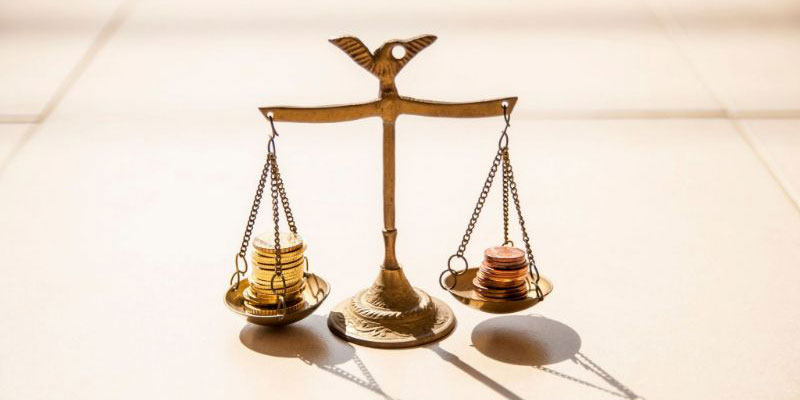Economic exposure is an encompassing phrase that refers to the various elements and occurrences that have the potential to affect operating efficiency and profitability. It may be difficult for a firm to meet the return expectations of its investors and other stakeholders if it is exposed to business risks. Nevertheless, a corporation may reduce risks in businesses faced from inside or outside of an organization.
How Does the Risk of Work Process?
The potential for a decline in a company's income or earnings decline, or even a loss of financial stability, is referred to as the business's risk tolerance. Every day, businesses have to deal with the inherent dangers of operating in the market or sector in which they are positioned. These dangers cannot be avoided.
Although every element that lowers the operational efficiency of a company or its capacity to meet its financial goals is considered a business risk, it is essential to categorize them when building a plan for risk management for business. This is because categorizing them allows for easier management. Although no one strategy will eliminate risk, businesses may improve their ability to foresee hazards and respond appropriately if they engage in adequate planning. Depending on their origin, business risks are often classified as internal and external.
How can a business manage external risk?

Internal threats are those that a firm face that originate from inside its structure and crop up when the company is doing its regular business. Because these dangers may be anticipated with a certain degree of accuracy, a corporation has a reasonable possibility of lessening the internal management risk it faces.
The human element, the technology component, and the limitation are the three subcategories of the potential internal cause.
Risk Involving Humans
Personnel problems might cause challenges in operations. A drop in output may occur if staff members get ill or wounded and cannot do their jobs.
The following are examples of human-factor risks:
- Workers strike
- Worker deception is always a problem.
- Governance or leadership that is not performing effectively
- An error made by one or more external manufacturers or suppliers
- Failure to pay in whole or on time on behalf of clients and prospective clients who have delinquent accounts
A firm may need to recruit new employees or find replacements for those essential to the company's performance. A temporary shutdown of a company due to a strike might result in a drop in sales and revenue.
Increasing the development manager may help decrease internal risks by raising employee morale via adequate remuneration and responsibility, which helps lower the likelihood of adverse events occurring within the organization. An employee that is pleased and motivated will likely be more effective.
Dangers of Technology
Unanticipated shifts in the manufacture, transportation, or marketing of a company's item or service are examples of the kind of change that falls under the category of intellectual risk.
For instance, an organization can be exposed to a technology risk in the form of antiquated operating systems that lower their capacity for production or interruptions in the supply chain or inventories. Another potential technical danger is inadequate investment in an information technology team to support firm systems. Difficulties with servers and software that result in downtime for the equipment can raise the risk of manufacturing shortages and the financial expenditures resulting from decreased income and personnel not being utilized.
Because it requires staying abreast of technological trends, research and development are frequently included in mitigating internal risks. Companies can lessen the likelihood of lagging behind competitors and losing revenue if they make investments in assets with a long-term outlook, such as technological advancements.
Danger to One's Body
A corporation is said to be exposed to physical risk when there is a possibility that its assets will be lost or damaged. Hedging one's exposure to any one of these three categories of risk can help a corporation cut down on its internal hazards.
For instance, businesses can protect themselves against the risk of their clients not indemnifying their invoices by purchasing payment facilities for their trade receivables from commercial insurers. This type of insurance is available to businesses. Credit insurance is often quite broad and offers protection against defaulting on debt for various reasons. It covers practically every possible economic or political cause of non, making it ideal for protecting against an extensive range of potential scenarios.
How can a business manage Internal risk?
External risks often consist of economic occurrences that originate outside the corporation's framework. A corporation cannot control or accurately predict the outcomes of events in the external environment, which might result in external risk. As a result, it is difficult to lessen the hazards involved.
Variables of an economic nature, those of a natural one, and those of a direct concern are the three categories of external hazards.
Threat to the Economy
Alterations in market circumstances are a component of economic risk. For illustration purposes, a general economic slowdown can result in an abrupt and unanticipated drop in revenue. Suppose a corporation sells to customers in the United States and business confidence is poor due to a crisis or high unemployment. In that case, private consumption will feel the consequences of the company's sales.
Companies can mitigate the effects of economic risks by lowering their operating expenses or broadening their customer base to increase the likelihood that their income will come from more than one market or geographic area.
Environmental Risk
Environmental determinants encompass natural calamities that hurt the usual operations of a firm. For instance, a natural disaster like an earthquake may make it impossible for a major retailer to stay open for several days or weeks, resulting in a significant drop in the amount of money brought in by customers for the whole month.
It is also possible that it will cause harm to the facility as well as the product that is being sold. Businesses frequently hold insurance to compensate for some of the monetary losses that might be incurred due to natural catastrophes. However, it's possible that the cash from the insurance policy won't be enough to compensate for the revenue lost as a result of the business having to close down or operate at a lower capacity.
Danger of Politics
The term "political risk" refers to the possibility of adverse consequences resulting from shifts in the political climate or the government's fiscal stance. Alterations to laws governing import and export, duties, taxation, and many other restrictions can potentially have a detrimental impact on a company.
Execution Of the Business Risk

Maintaining an appropriate quantity of capital is the most effective method for risk management in a corporate setting. A corporation that has sufficient cash resources can more successfully withstand internal hurricanes. In addition, businesses with adequate cash can better unanticipated weather dangers, such as economic downturns or political conflicts.



